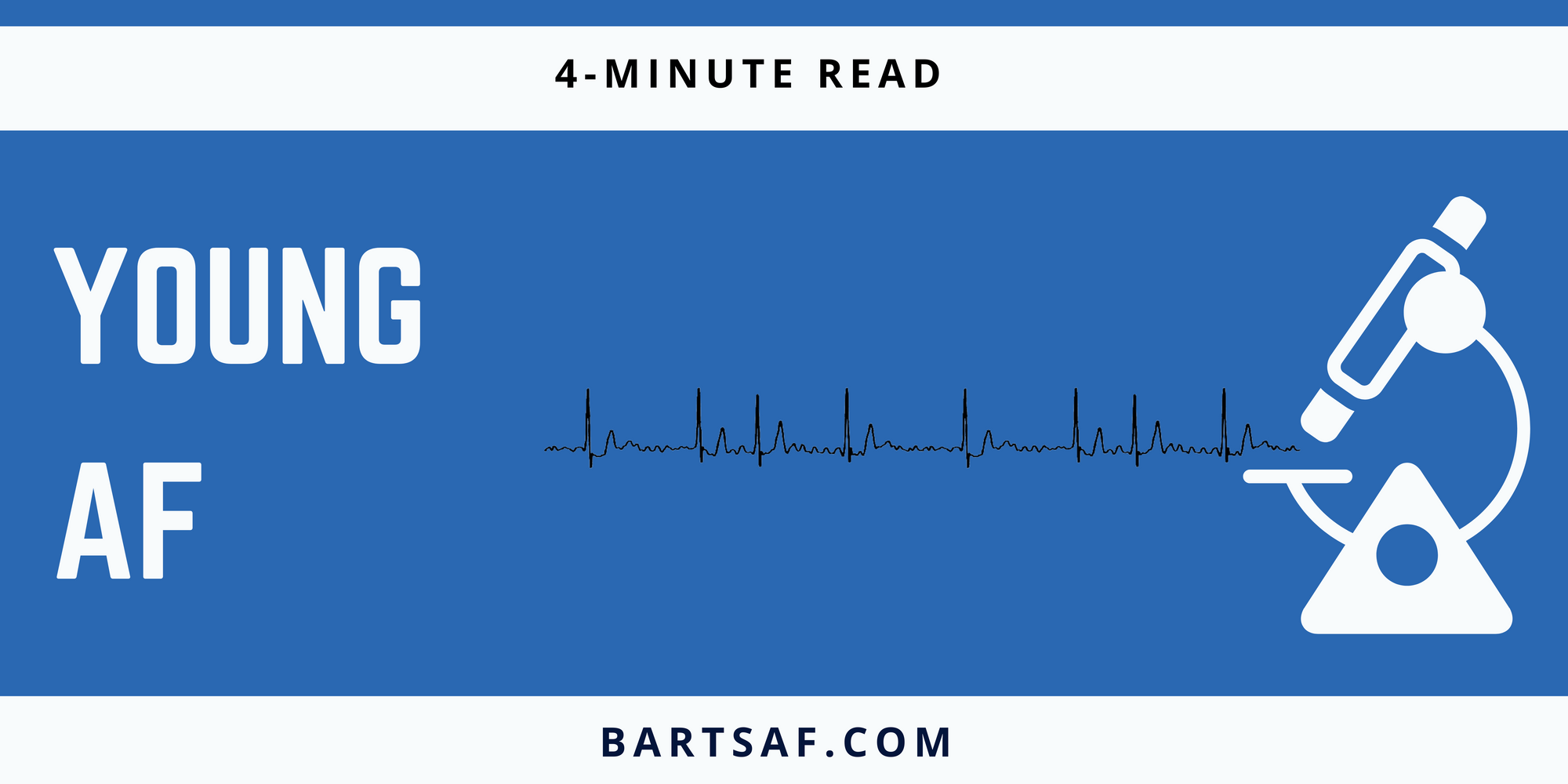Young AF
Learn about the risks of atrial fibrillation (AF) in young adults, the most significant risk factors, and how to address and manage them for a healthier life.

'AF begets AF'. This was title of a landmark publication in 1995 by Dutch scientists who found that more time in AF leads to more time in the future in AF. AF is a progressive condition and can be harder to reverse over time. But why do some people get it so early? And should we treat it in the same way?
Age is one of the strongest factors for AF. The condition is much more common in older adults and the risk increases as you get older. In some cases, AF in young adults can be a marker of underlying structural heart issues that are causing the AF and getting an echo scan to evaluate this is crucial.
Looking at data from a large European registry, less than 1 in 1000 people aged 40-49 have AF. The risk rose to 18 in 1000 for people over 70. Whereas, hypertension is the most significant risk factor in over 60, a high BMI was the most significant risk factor for AF in younger patients in that European registry. Increased alcohol consumption and a history of previous heart attacks were also associated with AF risk in middle age.
Should your age affect your treatment options?
Age is a factor when assessing a patient's stroke risk. Our post on the CHADSVASc score suggested that a young patient without any risk factors may have a low stroke risk and could quite reasonably avoid blood thinners.
After stroke risk, assessing symptom severity is the next consideration. Anti-arrhythmic drugs and catheter ablation can both be effective in patients where rate control has been ineffective or is poorly tolerated (not uncommon in younger patients)
But what should we do if there are no symptoms? If AF begets AF then isn't it just going to get worse and become irreversible? This is a great question and a really hot topic in 2023. Do you remember EAST-AFNET4- the study we spoke about last year? The results were published in 2020 and suggested earlier AF rhythm control - even in asymptomatic, persistent AF patients. However, the structural abnormalities may continue to progress even if the AF itself is gone. So we have to wait and see the long-term impact of intervening early
Lastly, but arguably most importantly, we circle back to risk factor modification. The risk factors that drive early AF (high BMI, alcohol excess, coronary disease) compound over time. Addressing these not only slows or potentially even reverses AF progression but may otherwise lead to other chronic diseases like diabetes, liver disease and heart failure. In this case, AF should be seen as a warning sign and lifestyle modification should be very strongly encouraged to reduce the risk of other diseases through life.
Wijffels MC, Kirchhof CJ, Dorland R, Allessie MA. Atrial fibrillation begets atrial fibrillation. A study in awake chronically instrumented goats. Circulation. 1995 Oct 1;92(7):1954-68. doi: 10.1161/01.cir.92.7.1954. PMID: 7671380.
